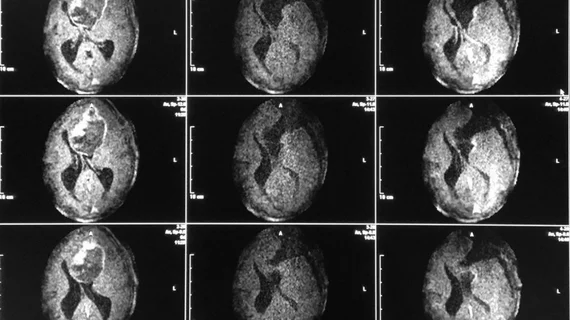Interpreting MRI scans with potential brain tumor findings is known to be difficult, but new research published in Clinical Problems in Diagnostic Radiology details how one practice better equipped their radiologists to complete the task.
Emory University researchers found that a user-friendly, easy-to-consume website helped their imaging experts understand and implement a system to report such tumors: the brain tumor reporting and data system (BT-RADS). And educating professionals using this approach, the team noted, may help other institutions implement similar novel advances.
“To our knowledge, our website is the first to provide a comprehensive background information and resources about a novel imaging reporting system,” Sera Kim, with Emory’s school of medicine and colleagues wrote.
“As we envision that a structured reporting system will become more widespread in brain tumor imaging, educating trainees of this novel structured reporting system will be especially significant, and our website has potential to facilitate adoption at other institutions,” they added.
The website—www.btrads.com—includes visual aids and an interactive tool for residents to score their patient’s imaging findings and confirm BT-RADS scores. It’s responsive design also allows users to view information on their phones or tablets.
Unlike books or articles, Kim et al. pointed out, their site offers a more interactive learning experience with information available at the user’s convenience.
More than 10,000 unique users visited the website over the one-year study period. The most-downloaded piece of material was the full BT-RADS guide. Use of BT-RADS reached over 70% at one Emory-affiliated institution, indicating the strategy was a success, the authors wrote.
And after surveying more than 100 physicians, trainees and faculty, each reported that BT-RADS improved education, with the latter indicating they would use the system to facilitate educational discussions.
In another show of support, faculty physicians found BT-RADS offered more consistent, clear and confident MRI reports and improved communication between radiologists and referring physicians.
Going forward Kim and colleagues plan to make the website’s interface even more user-friendly via a satisfaction survey. They hope other practices can learn from their approach.
“Future groups attempting to introduce a new clinical practice, or implementing a reporting changes specifically, should consider using a website,” they concluded.

